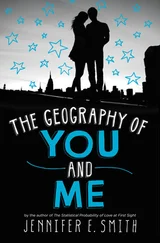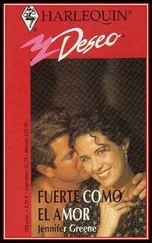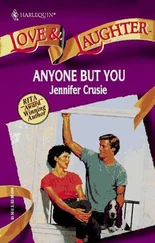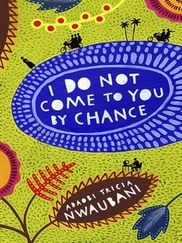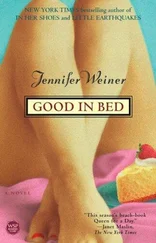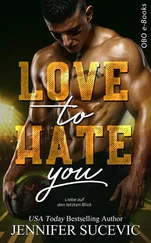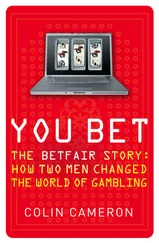Dreiser was Dr. Theodore Dreiser of Harvard and Columbia, acknowledged by New York magazine and everyone else who mattered as the top reproductive specialist in the city. I shook my head.
“No more.”
“Listen. You don’t have to make up your mind right now. We’ll get some lunch, you can have a glass of wine.”
I smiled. These days, the only times I drank were after doctors’ visits such as these. . or after the D and C that would follow. Then I pulled the cotton gown down over my bare knees (tanned, hairless, absolutely jiggle-free, looking better than they had when I was a teenager) and sat up. “I’m not getting any younger.” This was true. I might have had the body of a woman in her twenties — I certainly worked hard enough at it — but I was forty-three years old, even if Marcus thought I was thirty-eight. “I don’t think we’ve got any more time to waste.”
Marcus, impeccable in his made-to-measure shirt and silk tie, started to answer when the door opened, revealing the doctor, slim and erect in his white coat, with a neatly trimmed salt-and-pepper beard, oversized Roman features, liquid brown eyes, and an expression of consternation. He didn’t like being a loser any more than I did. It meant that New York magazine and the ladies who mattered, the ones who could pay for treatments even after their insurance ran out, might start sending their friends somewhere else. “Guys, I’m so sorry,” he said. Marcus squeezed my hand again. I turned my face toward the wall and finally let the tears come, the ones that had been threatening since the spotting — bleeding — had started.
I was thirty-seven when I met my husband — thirty-seven as far as he was concerned; forty-two in real life, but if I looked thirty-seven and had ID to prove it, then why tell people I wasn’t? Honesty has its place, and its place is not in the dating world. For the past five years, I’d run my own public-relations shop, a boutique agency with a handful of clients, a mix of reliable-but-boring businesses — a jewelry designer, a chain of magazines — who’d pay their bills on time and rarely need my help in the middle of the night, plus a handful of celebrities who were neither reliable nor boring, who’d pay a minimum of five thousand dollars a month to keep me on retainer and sometimes would require my services in the wee small hours.
Every day I went to the office dressed in one of the designer suits I’d bought secondhand at Michael’s Consignment on the Upper East Side. I’d wear Manolos and Louboutins — I had two pairs of each, and rotated them every day. My jeweler client lent me necklaces and bracelets and cocktail rings; the makeup line I represented sent over a basket of freebies every month. I bartered with a dentist to get my teeth bleached and traded with a personal trainer and a dermatologist for their services, but I still paid to get my hair highlighted at Frédéric Fekkai, which was insanely costly but a necessary expense, the kind of thing you couldn’t scrimp on. Everyone saw your hair every day and everyone worth knowing would know whether you were paying for those buttery chunks or trying to get the same look at a less-expensive salon or, God forbid, by doing it yourself.
I had an apartment in the right neighborhood, a one-bedroom walk-up sparsely furnished with the beautiful things I’d saved up and bought with cash: a gorgeously curvy couch upholstered in fawn-colored velvet, a queen-size bed with Frette sheets, a Turkish rug, glowing blue and gold and ruby-red, that I’d admired in a shop window for months before buying.
Instead of paintings or sculpture, I had an expandable metal pole, an extra-long version of the kind meant to hold a shower curtain, that ran the length of my small living room. The pole held the clothes I’d bought at sample sales or secondhand or saved to pay retail for. The skirts and shirts and dresses, carefully culled and curated — cotton and taffeta, crisp linens, plush velvet, luscious silk — served as a movable, changeable display, hanging just above the low shelves filled with fashion magazines that ran along the wall.
There was no TV, but there were stacks of scrapbooks that I’d worked on for years, filling the pages with photographs I’d torn from magazines or snipped from the newspaper — pictures of models and socialites attending benefits and balls, pictures of women with three names, at least one of them belonging to an inanimate object or a fruit: the Sykes sisters at charity balls, Loulou de la Falaise presiding over a gala at the Met; Audrey Hepburn at the Oscars, Jackie O. on board the yacht Christina, in her oversized sunglasses, with an Hermès scarf tied beneath her chin. That was all I had by way of decoration, all I wanted. The apartment wasn’t a home as much as a cocoon, a place where I’d crawl in as a caterpillar and emerge lovely and transformed. . and rich, with all the security that piles of money implied.
I met Marcus at a Starbucks on Fifty-sixth between Sixth and Seventh, across from the Parker Meridien hotel, where I was hosting a party for my jewelry designer. Hearts and Bones was the theme. The tables were draped in blood-red chiffon, and the disc jockey was a skeletal young person who went by the name of Q, who’d flown in from Los Angeles with a sobriety manager. We were serving baby back ribs and molasses-basted chicken wings, Day of the Dead sugar skulls and, for the daring, tiny quail hearts pierced with silver skewers. I was going over the details in my head, waiting in line at the coffee shop for my usual, a tall skinny latte, extra hot, no foam, when Marcus pushed through the glass doors and stopped in the middle of the store. I noticed him as he stood there, rocking back and forth, peering at the menu with his chin raised, oblivious to the disgruntled hipsters and office workers backing up behind him.
“Coffee,” he said, half to himself. “I just want coffee.”
I could tell, with one quick glance informed by five years’ worth of reading GQ and T Style, that his suit was a two-thousand-dollar Brioni, that his shirt was made-to-measure and his shoes were hand-sewn. He was in his fifties, I figured, but fit, with the tall, broad-shouldered frame of a former football player and an easy, confident stance. He had a high forehead and features a little too small for his wide, round face, a snub nose and deep-set eyes and a rosebud of a mouth. His hair was thick, glossy black, beautifully cut, and even though he was freshly shaved, I could see bluish-black dots of stubble on his cheeks. If he kissed you, you’d know you were kissing a man, not one of these pampered, facialed metrosexuals who could tie scarves better than a Frenchwoman and talk knowledgeably about moisturizers. He had a cleft in his chin and big hands, with black hair on the knuckles and on the inch or two of wrist that I could see. No ring. My mouth went dry as I gave up my place in line and walked over to him. “Small, medium, or large?” I asked, standing close enough to give him a whiff of my perfume, Coco by Chanel, a little sultry for the office but perfect for this occasion. Spotting the Rolex on his wrist, I thanked God that I’d worn it.
He turned to me with a grateful look. “Large. Black.”
“Could make a dirty joke here. Won’t do it,” I said.
“I appreciate your restraint. May I buy you a coffee?”
“My treat,” I said, and stepped up to the barista, handing her my platinum AmEx card, the one I used for business expenses, ordering my latte and adding, “And one venti house blend for my friend.”
“Name?” asked the bored girl with tattoos of hyacinths twined around her arms. She would regret them later. I’d had my own tattoo, far nicer work than hers, lasered off the small of my back here in New York three months after my arrival, at considerable pain and expense.
Читать дальше





